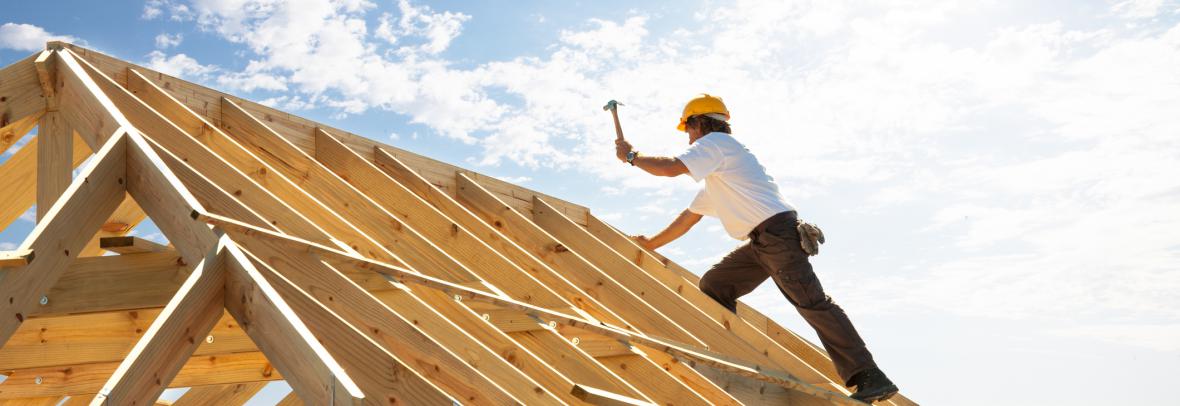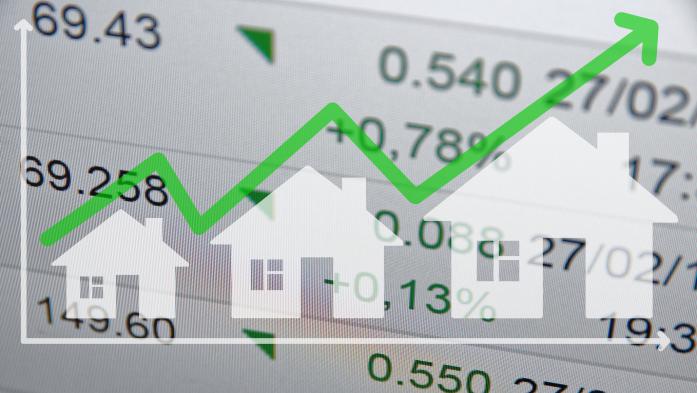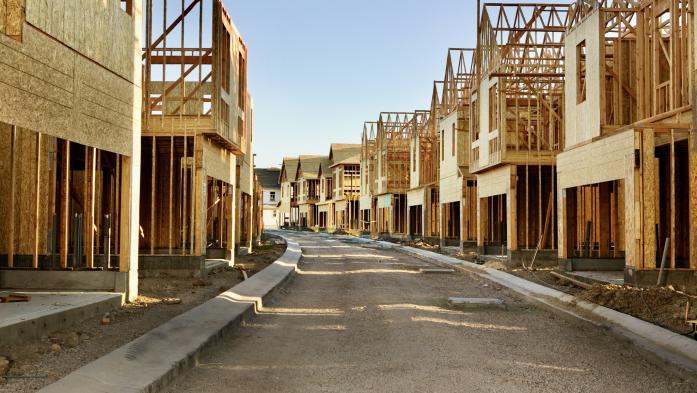Economists at International Builders’ Show: Construction should gradually increase as the Fed is on track to cut rates during 2024’s second half with inflation slowing.
LAS VEGAS – While higher interest rates pushed single-family starts down in 2022 and 2023, production should move on a gradual upward path in 2024 as the Federal Reserve is on track to cut rates during the second half of the year with inflation slowing, according to economists speaking at the National Association of Home Builders (NAHB) International Builders’ Show in Las Vegas today.
“While the Fed’s fight against inflation is building progress, the lingering inflation challenge is housing inflation,” said NAHB Chief Economist Robert Dietz. “Shelter inflation – rent and homeownership costs – are still rising at a 5.4% rate, and for the past year, more than half of overall inflation in the economy has been shelter inflation. The only way to tame shelter inflation, and get overall inflation lower, is to build more housing.”
A Builder’s Outlook for Spring Homebuying Season
With a nationwide shortage of roughly 1.5 million housing units, increasing the nation’s housing supply will not only help tame inflation, but also ease the nation’s housing affordability crisis by moving toward a healthy supply-demand balance in the for-sale and rental markets.
NAHB is forecasting two or three Fed rate cuts of 25 basis points each during the latter half of 2024, which should put mortgage rates on an uneven downward path. With economic data stronger than expected at the start of the year, mortgage rates increased from about 6.6% to 6.9% by the end of February per Freddie Mac, indicating that even with rates expected to moderate in the months ahead, it could be a bumpy path forward.
“By the end of this year, NAHB projects mortgage rates will be below 6.5% and by the end of 2025, we expect rates to be in the high 5% range,” said Dietz. “This is good news for builders, housing demand and housing affordability.”
But as single-family home building expands in 2024, the market will see growing supply-side challenges in the form of higher prices and/or shortages of lumber, lots and labor.
“Home builders continue to contend with elevated construction and regulatory costs,” said Dietz. “Indeed, regulatory costs, which include complying with building codes, zoning issues and other costly challenges, make up almost 24% of the final sales price of a newly built single-family home, or $93,870 per new home.”
NAHB conducts a survey on the regulatory costs of home building every five years and the latest survey shows that regulatory costs for an average home built for sale increased by 11% from 2016 to 2021, faster than inflation.
The forecast
As interest rates moderate, single-family starts are forecast to increase 4.7% this year to an annual rate of 988,000 units and rise an additional 4.2% in 2025 to a 1.03 million pace. “We need to build more than 1.15 million single-family homes a year to reduce the nation’s housing deficit,” Dietz noted.
On the multifamily front, NAHB is expecting multifamily starts to fall 19.7% this year to a rate of 379,000 because of tight credit conditions. There are approximately 1 million apartments under construction – the highest rate since 1973 – and as these new apartments come to market, rent growth will slow, which will help ease inflation. However, this new supply will put a damper on the apartment market until it stabilizes in 2025 with a 2.3% gain to 388,000 units.
Meanwhile, residential remodeling activity is expected to remain relatively flat this year followed by a 2% gain for 2025 as the existing home sales market improves.
More builders are bullish
With the mortgage rate “lock-in” effect contributing to existing home sales falling to near a 30-year low in 2023, and new homes sales accounting for more than 30% of the single-family market (compared to a 10-12% average rate), the new home sales market appears poised for another solid year in 2024.
“Eighty percent of builders anticipate starting more homes this year, and more than half (51%) expect that starts will be up more than 10% compared to 2023,” said Zonda Chief Economist Ali Wolf.
Wall Street Sees a Solid Year for Homebuilders
And amidst a shortage of buildable lots, there is close to an even split about charting future land acquisition strategy. A Zonda survey shows that 49% of builders are moving “full steam ahead,” while 46% plan to cautiously move forward. There is a similar split with how builders are seeing land prices, with 49% reporting land prices are moving higher compared to a few months ago while 42% said that prices remain relatively flat.
On the demographic front, there has been a big shift in buying among millennials and baby boomers. Among the generations, boomers accounted for the largest overall home buying share in 2023 at 39%, up roughly 10 percentage points from the previous year.
Meanwhile, millennials led the generational home buying share in 2022 with more than 40% of the market, but that rate plummeted to 28% last year. A major factor could be the generational wealth effect, as the share of all-cash sales hit a nine-year high in 2023, and averaged well above 20% in several major markets.
And in helping to understand what today’s new home buyer wants, Wolf noted the top answer buyers gave in considering a purchase is to “avoid renovations or problems,” with more than 40% citing this reason. This was followed by a lack of inventory of previously owned homes and the ability to choose and customize design, which were both cited by about 25% of respondents. Energy efficiency and smart home features were at the back of the pack, under 10% and 5%, respectively.
Housing is past peak unaffordability
While housing affordability remains a serious challenge, the market appears to have hit its peak unaffordability level in October last year, according to Danielle Hale, chief economist at Realtor.com.
“The monthly mortgage payment for a median-priced active home listing reached a high of $2,405 in October 2023, which represents 29.1% of the share of a median family income,” said Hale. “In January 2024, the payment amount was $2,101, or 26.8% of a median family income.”
Like the other economists, Hale said that more housing inventory is needed to address nationwide shortfalls and ease affordability woes. Citing Realtor.com data, she pointed out that 2023 inventory levels were 36% below the 2017-2019 average, and that a 56% surge is needed just to catch up to that past rate.
Inventory trends vary widely across the nation, Hale noted, with many markets in New England and the Midwest continuing to have an extremely limited supply of homes available. For example, in January 2024, Hartford, Conn. had 81% fewer homes for sale compared to the 2017-2019 period, and it was followed by Rochester, N.Y. at 71%. Other major markets including Philadelphia, Chicago, Cleveland and Baltimore had well above 50% fewer homes available for sale over the same time period.
The story is different in the South and West, where many markets have recovered or are within 15% of the average 2017-2019 for-sale level. Three Texas metros – San Antonio, Austin and Dallas-Fort Worth – actually had more homes for sale in January 2024. New Orleans, San Francisco, Denver and Houston had inventory levels in January 2024 that were slightly in the red compared to 2017-2019.
© 2024 Florida Realtors®
Go to Source
Author: kimh





